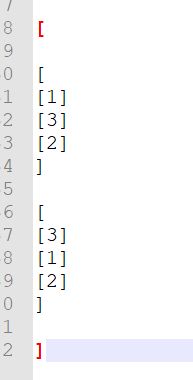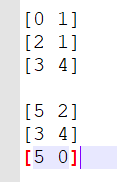- 探索AI人工智能医疗NLP实体识别系统的架构设计
AI学长带你学AI
人工智能自然语言处理easyuiai
探索AI人工智能医疗NLP实体识别系统的架构设计关键词:人工智能、医疗NLP、实体识别、系统架构、深度学习、自然语言处理、医疗信息化摘要:本文将深入探讨医疗领域NLP实体识别系统的架构设计。我们将从基础概念出发,逐步解析医疗文本处理的特殊性,详细介绍实体识别技术的核心原理,并通过实际案例展示如何构建一个高效可靠的医疗实体识别系统。文章还将探讨当前技术面临的挑战和未来发展方向,为医疗AI领域的从业者
- 人工智能动画展示人类的特征
AGI大模型与大数据研究院
AI大模型应用开发实战javapythonjavascriptkotlingolang架构人工智能
人工智能,动画,人类特征,情感识别,行为模拟,机器学习,深度学习,自然语言处理1.背景介绍人工智能(AI)技术近年来发展迅速,已渗透到生活的方方面面。从智能语音助手到自动驾驶汽车,AI正在改变着我们的世界。然而,尽管AI技术取得了令人瞩目的成就,但它仍然难以完全模拟人类的复杂行为和特征。人类的特征是多方面的,包括情感、认知、社交和创造力等。这些特征是人类区别于其他生物的重要标志,也是人类社会文明发
- RNN案例人名分类器(完整步骤)
AI扶我青云志
rnn人工智能深度学习nlplstmgru
今天给大家分享一个NLP(自然语言处理)中的一个小案例,本案例讲解了RNN、LSTM、GRU模型是如何使用并进行预测的,一、案例架构人名分类器的实现可分为以下五个步骤:第一步:导入必备的工具包第二步:对data文件中的数据进行处理,满足训练要求第三步:构建RNN模型(包括传统RNN,LSTM以及GRU)第四步:构建训练函数并进行训练五步第:构建评估函数并进行预测二、实现步骤1.导包#导入torch
- Teacher Forcing--------一种用于序列生成任务的训练技巧
AI扶我青云志
自然语言处理人工智能
好的,我们来详细介绍一下TeacherForcing,这是一种在训练序列生成模型(如循环神经网络RNN、长短期记忆网络LSTM、门控循环单元GRU、以及后来的Transformer)时常用的重要技术。核心概念目标:训练一个模型,使其能够根据给定的输入序列(如前一个词、图像编码、时间步数据等)预测下一个输出元素(如下一个词、下一个音符、下一个时间点的值等)。这在机器翻译、文本摘要、对话生成、语音合成
- mediapipe流水线分析 三
江太翁
AndroidNDK人工智能mediapipeandroid
目标检测Graph一流水线上游输入处理1TfLiteConverterCalculator将输入的数据转换成tensorflowapi支持的TensorTfLiteTensor并初始化相关输入输出节点,该类的业务主要通过interpreterstd::unique_ptrtflite::Interpreterinterpreter_=nullptr;实现类完成数据在cpu/gpu上的推理1.1Tf
- 【推荐算法课程二】推荐算法介绍-深度学习算法
盒子6910
运维视角下的广告业务算法推荐算法深度学习运维开发运维人工智能
三、深度学习在推荐系统中的应用3.1深度学习推荐模型的演化关系图3.2AutoRec——单隐层神经网络推荐模型3.2.1AutoRec模型的基本原理AutoRec模型是一个标准的自编码器,它的基本原理是利用协同过滤中的共现矩阵,完成物品向量或者用户向量的自编码。再利用自编码的结果得到用户对物品的预估评分,进而进行推荐排序。什么是自编码器?自编码器是指能够完成数据“自编码”的模型。无论是图像、音频,
- DeepFM算法原理及应用场景
DeepFM(DeepFactorizationMachine)是一种结合了因子分解机(FactorizationMachines,FM)和深度神经网络(DNN)的混合模型,主要用于处理高维稀疏数据(如推荐系统中的点击率预测)。其核心思想是同时捕捉低阶(线性)和高阶(非线性)特征交互。1.算法原理模型结构如下:FM部分:负责捕捉低阶特征交互(如一阶和二阶特征组合)。一阶项:线性特征权重。二阶项:通
- 【深度学习】神经网络剪枝方法的分类
烟锁池塘柳0
机器学习与深度学习深度学习神经网络剪枝
神经网络剪枝方法的分类摘要随着深度学习模型,特别是大语言模型(LLM)的参数量爆炸式增长,模型的部署和推理成本变得异常高昂。如何在保持模型性能的同时,降低其计算和存储需求,成为了工业界和学术界的核心议题。神经网络剪枝(Pruning)作为模型压缩的关键技术之一,应运而生。本文将解析剪枝技术的不同分类,深入探讨其原理、优缺点。文章目录神经网络剪枝方法的分类摘要1为什么我们需要剪枝?2分类方法一:剪什
- 初始CNN(卷积神经网络)
超龄超能程序猿
机器学习cnn人工智能神经网络
卷积神经网络(ConvolutionalNeuralNetwork,简称CNN)作为深度学习的重要分支,在图像识别、目标检测、语义分割等领域大放异彩。无论是手机上的人脸识别解锁,还是自动驾驶汽车对道路和行人的识别,背后都离不开CNN的强大能力一、CNN诞生的背景与意义在CNN出现之前,传统的图像识别方法主要依赖人工提取特征,例如使用SIFT(尺度不变特征变换)、HOG(方向梯度直方图)等算法。这些
- 典型的几种神经网络
Victor Zhong
AI框架神经网络人工智能深度学习
骨干网络CNN(卷积神经网络)RNN(循环神经网络)三级目录CNN(卷积神经网络)包括输入层、隐藏层、输出层:输入层一般为一张图片(w,h,d),输入层数据一般要做归一化处理;隐藏层包含特有的卷积层(卷积核有权重系数)、池化层(没有权重系数)、全连接层,还有残差块?和Inception模块?。;输出层:RNN(循环神经网络)单向的RNN示意图:三级目录
- 生物启发AI新突破:神经形态芯片+脉冲神经网络落地指南
HeartException
人工智能
前言前些天发现了一个巨牛的人工智能免费学习网站,通俗易懂,风趣幽默,忍不住分享一下给大家。点击跳转到网站《生物启发AI新突破:神经形态芯片+脉冲神经网络落地指南》副标题:基于2025年英特尔Loihi3芯片的工业级部署实战(附能耗对比&代码库)封面建议:脉冲神经网络动态脉冲传导图覆盖在神经形态芯片显微结构上,标注「能效比:传统GPU的1/800」一、2025生物启发AI的临界点突破生物神经特性事件
- 多模态大模型:技术原理与实战 看清GPT的进化史和创新点
AI天才研究院
AgenticAI实战计算AI人工智能与大数据计算科学神经计算深度学习神经网络大数据人工智能大型语言模型AIAGILLMJavaPython架构设计AgentRPA
多模态大模型:技术原理与实战看清GPT的进化史和创新点1.背景介绍1.1人工智能的发展历程1.1.1早期人工智能1.1.2机器学习时代1.1.3深度学习的崛起1.2自然语言处理的演进1.2.1基于规则的方法1.2.2统计机器学习方法1.2.3深度学习方法1.3大语言模型的出现1.3.1Transformer架构的提出1.3.2GPT系列模型的发展1.3.3多模态大模型的兴起2.核心概念与联系2.1
- 聚焦的伟力:注意力机制与Transformer的创世纪
田园Coder
人工智能科普人工智能科普
当LSTM和GRU凭借其精密的门控系统,成功驯服了时间的长河,让神经网络能够跨越数十甚至数百步记住关键信息,并在机器翻译、文本生成等领域大放异彩时,一个看似微小却影响深远的瓶颈逐渐浮出水面,尤其是在序列到序列(Seq2Seq)框架中。在标准的Seq2Seq模型(如用于神经机器翻译)里,编码器(通常是一个RNN如LSTM)需要将整个输入序列(如一个英语句子)的信息压缩成一个固定长度的上下文向量(Co
- 《卷积神经网络到Vision Transformer:计算机视觉的十年架构革命》
HeartException
人工智能学习
前言前些天发现了一个巨牛的人工智能免费学习网站,通俗易懂,风趣幽默,忍不住分享一下给大家。点击跳转到网站题目《卷积神经网络到VisionTransformer:计算机视觉的十年架构革命》展开深度解析,全文采用技术演进史+架构对比+产业影响的三段式结构,附关键数据与趋势预测:卷积神经网络到VisionTransformer:计算机视觉的十年架构革命副标题:从局部感知到全局建模,一场改变AI视觉基石的
- AI原生应用必知:5大高效多轮对话框架对比
AI原生应用开发
AI-nativeeasyui前端ai
AI原生应用必知:5大高效多轮对话框架对比关键词:AI原生应用、多轮对话、对话框架、自然语言处理、上下文管理、意图识别、对话状态跟踪摘要:本文深入探讨了构建AI原生应用时必备的5大多轮对话框架,包括Rasa、Dialogflow、MicrosoftBotFramework、AmazonLex和IBMWatsonAssistant。通过对比分析它们的架构设计、核心功能和应用场景,帮助开发者选择最适合
- 【网络通信安全】深入解析 OSPF 协议:从概念到 eNSP 实战配置(附完整代码与排错指南)
不羁。。
网络通信安全智能路由器网络
目录一、OSPF协议核心概念:为什么它是企业网络的“神经网络”?1.协议本质与设计目标2.核心组件与工作原理(1)链路状态数据库(LSDB)(2)区域划分原则(3)路由器角色二、实验环境搭建:3台路由器构建跨区域OSPF网络1.网络拓扑图2.设备与IP规划表三、逐设备配置详解:从接口到OSPF进程的全流程操作1.基础配置:接口IP与设备命名(以R1为例)2.OSPF进程配置:区域划分与网络宣告(1
- JuPyter(IPython) Notebooks中使用pip安装Python的模块
weixin_34218890
开发工具python人工智能
问题描述:没有带GPU的电脑,搞深度学习不是耍流氓嘛,我网上看到有个云平台,免费使用了一下,小姐姐很热情。使用过程如下:他们给的接口是Jupyter编辑平台,我就在上面跑了一个小例子。tensorflow和python环境是他们配置好的,不过我的例子中需要导入matplotlib.pylot模块。可是他们没有提供,怎么办呢?网上查了一下啊解决方法:采用如下方法:importpipdefMyPipi
- 【LangChain编程:从入门到实践】LangChain与其他框架的比较
AI天才研究院
AgenticAI实战计算AI人工智能与大数据计算科学神经计算深度学习神经网络大数据人工智能大型语言模型AIAGILLMJavaPython架构设计AgentRPA
【LangChain编程:从入门到实践】LangChain与其他框架的比较1.背景介绍1.1人工智能发展现状在当今时代,人工智能(AI)已经成为科技领域中最热门和最具革命性的话题之一。随着计算能力的不断提升和算法的持续优化,AI系统正在不断扩展其应用范围,包括自然语言处理、计算机视觉、决策系统等各个领域。1.2LangChain概述在这种背景下,LangChain作为一个新兴的AI框架应运而生。L
- happy-llm 第一章 NLP 基础概念
weixin_38374194
自然语言处理人工智能学习
文章目录一、什么是NLP?二、NLP发展三大阶段三、NLP核心任务精要四、文本表示演进史1.传统方法:统计表征2.神经网络:语义向量化课程地址:happy-llmNLP基础概念一、什么是NLP?核心目标:让计算机理解、生成、处理人类语言,实现人机自然交互。现状与挑战:成就:深度学习推动文本分类、翻译等任务达到近人类水平。瓶颈:歧义性、隐喻理解、跨文化差异等。二、NLP发展三大阶段时期代表技术核心思
- Happy-LLM 第二章 Transformer
HalukiSan
transformer深度学习人工智能
Transform架构图片来自[Happy-llm](happy-llm/docs/chapter2/第二章Transformer架构.mdatmain·datawhalechina/happy-llm),若加载不出来,请开梯子注意力机制前馈神经网络每一层的神经元都与上下两层的每一个神经元完全连接数据在其中只向前流动,用于处理静态的数据,进行图像识别或者分类,但是该网络没有记忆能力,数据在它里面没
- Nystromformer:一种基于 Nyström 方法的自注意力近似算法
AI专题精讲
Paper阅读人工智能自然语言处理AI
1.摘要Transformer已经成为广泛自然语言处理任务中的强大工具。推动Transformer展现出卓越性能的一个关键组件是self-attention机制,它对每个token编码了其他token的影响或依赖关系。虽然self-attention机制具有诸多优势,但其在输入序列长度上的二次复杂度限制了其在较长序列上的应用——这是当前社区积极研究的一个主题。为了解决这一限制,我们提出了Nystr
- 供应链风险管理:AI预测潜在风险
AI智能应用
AI大模型应用入门实战与进阶javapythonjavascriptkotlingolang架构人工智能
供应链风险管理,AI预测,机器学习,深度学习,自然语言处理,风险评估,供应链可视化1.背景介绍在当今全球化经济体系中,供应链的复杂性和脆弱性日益凸显。供应链风险是指任何可能对供应链正常运行造成负面影响的事件或因素。这些风险可能来自自然灾害、政治动荡、经济波动、技术故障、供应商违约等方面。一旦供应链风险爆发,可能会导致生产中断、产品短缺、成本飙升、品牌形象受损等严重后果。传统供应链风险管理方法主要依
- TensorFlow武林志 第一卷:入门篇 - 初入江湖 第一章:真气初现
空中湖
tensorflow武林志tensorflow人工智能python
第一卷:入门篇-初入江湖第一章:真气初现林枫揉了揉酸痛的胳膊,将最后一捆柴火堆放在灶房角落。这是他来到青霄剑宗做杂役的第三个月,每日劈柴挑水的生活让他原本白皙的皮肤变得黝黑粗糙。"喂,新来的!掌门要的热水怎么还没送去?"门外传来管事的呵斥声。"马上就好!"林枫急忙提起铜壶,滚烫的热水溅在他手背上,他却浑然不觉疼痛。自从上月在后山偶然吞服了那枚奇异的朱果后,他对冷热疼痛的感知就变得异常迟钝。穿过曲折
- 供应链风险管理:AI如何预测供应链风险
AI大模型应用之禅
javapythonjavascriptkotlingolang架构人工智能
供应链风险管理,AI预测,机器学习,深度学习,自然语言处理,时间序列分析,风险评估1.背景介绍在当今全球化经济体系中,供应链风险已成为企业面临的重大挑战。供应链的复杂性和不可预测性使得企业更容易受到各种风险的影响,例如自然灾害、政治动荡、经济波动、疫情爆发等。这些风险可能导致供应中断、成本增加、交付延迟,甚至损害企业声誉。传统供应链风险管理方法主要依赖于经验和专家判断,缺乏数据驱动和预测能力。随着
- Day36 复习日
cylat
python打卡深度学习机器学习人工智能python神经网络
目录一、对之前的信贷项目,利用神经网络训练下二、尝试进入nn.Module中,查看他的方法模型训练与评估相关参数管理相关模块管理相关设备相关钩子函数相关一、对之前的信贷项目,利用神经网络训练下importtorchimporttorch.nnasnnimporttorch.optimasoptimfromsklearn.model_selectionimporttrain_test_splitfr
- 使用Python爬虫与自然语言处理技术抓取并分析网页内容
Python爬虫项目
python爬虫自然语言处理javascript数据分析人工智能
1.引言在如今数据驱动的时代,网页爬虫(WebScraping)和自然语言处理(NLP)已成为处理大量网页数据的重要工具。利用Python爬虫抓取网页内容,结合NLP技术进行文本分析和信息抽取,能够从大量网页中提取有价值的信息。无论是新闻文章的情感分析、社交媒体的舆情分析,还是电商网站的商品评论挖掘,这些技术都发挥着至关重要的作用。本文将介绍如何利用Python爬虫与自然语言处理技术抓取并分析网页
- ConvNeXT:面向 2020 年代的卷积神经网络
摘要视觉识别的“咆哮二十年代”始于VisionTransformer(ViT)的引入,ViT很快取代了ConvNet,成为图像分类任务中的最新最强模型。然而,vanillaViT在应用于目标检测、语义分割等通用计算机视觉任务时面临困难。HierarchicalTransformer(如SwinTransformer)重新引入了若干ConvNet的先验知识,使Transformer成为实用的通用视觉
- GPT在AI原生应用领域的无限潜力
GPT在AI原生应用领域的无限潜力关键词:GPT、AI原生应用、自然语言处理、无限潜力、应用场景摘要:本文深入探讨了GPT在AI原生应用领域所展现出的无限潜力。首先介绍了相关背景知识,包括GPT的基本概念和AI原生应用的定义。接着详细解释了GPT的核心概念,以及它与AI原生应用的紧密联系。通过数学模型和公式对GPT的工作原理进行了阐述,并给出了实际的代码案例。还探讨了GPT在多个实际应用场景中的表
- 深度学习前置知识全面解析:从机器学习到深度学习的进阶之路
一、引言:人工智能时代的核心技术在当今这个数据爆炸的时代,人工智能(AI)已经成为推动社会进步的核心技术之一。作为AI领域最重要的分支,深度学习(DeepLearning)在计算机视觉、自然语言处理、语音识别等领域取得了突破性进展,彻底改变了我们与机器交互的方式。本教案将从机器学习的基础知识出发,系统性地介绍深度学习的核心概念、数学基础、网络架构和训练方法,为读者构建完整的知识体系框架。无论你是刚
- Pytorch 之torch.nn初探 torch.nn.Module与线性--Linear layers
十有久诚
人工智能机器学习pytorch
初探torch.nn.Module神经网络可以使用torch.nn包构建。它提供了几乎所有与神经网络相关的功能,例如:线性图层nn.Linear,nn.Bilinear卷积层nn.Conv1d,nn.Conv2d,nn.Conv3d,nn.ConvTranspose2d非线性nn.Sigmoid,nn.Tanh,nn.ReLU,nn.LeakyReLU池化层nn.MaxPool1d,nn.Aver
- 面向对象面向过程
3213213333332132
java
面向对象:把要完成的一件事,通过对象间的协作实现。
面向过程:把要完成的一件事,通过循序依次调用各个模块实现。
我把大象装进冰箱这件事为例,用面向对象和面向过程实现,都是用java代码完成。
1、面向对象
package bigDemo.ObjectOriented;
/**
* 大象类
*
* @Description
* @author FuJian
- Java Hotspot: Remove the Permanent Generation
bookjovi
HotSpot
openjdk上关于hotspot将移除永久带的描述非常详细,http://openjdk.java.net/jeps/122
JEP 122: Remove the Permanent Generation
Author Jon Masamitsu
Organization Oracle
Created 2010/8/15
Updated 2011/
- 正则表达式向前查找向后查找,环绕或零宽断言
dcj3sjt126com
正则表达式
向前查找和向后查找
1. 向前查找:根据要匹配的字符序列后面存在一个特定的字符序列(肯定式向前查找)或不存在一个特定的序列(否定式向前查找)来决定是否匹配。.NET将向前查找称之为零宽度向前查找断言。
对于向前查找,出现在指定项之后的字符序列不会被正则表达式引擎返回。
2. 向后查找:一个要匹配的字符序列前面有或者没有指定的
- BaseDao
171815164
seda
import java.sql.Connection;
import java.sql.DriverManager;
import java.sql.SQLException;
import java.sql.PreparedStatement;
import java.sql.ResultSet;
public class BaseDao {
public Conn
- Ant标签详解--Java命令
g21121
Java命令
这一篇主要介绍与java相关标签的使用 终于开始重头戏了,Java部分是我们关注的重点也是项目中用处最多的部分。
1
- [简单]代码片段_电梯数字排列
53873039oycg
代码
今天看电梯数字排列是9 18 26这样呈倒N排列的,写了个类似的打印例子,如下:
import java.util.Arrays;
public class 电梯数字排列_S3_Test {
public static void main(S
- Hessian原理
云端月影
hessian原理
Hessian 原理分析
一. 远程通讯协议的基本原理
网络通信需要做的就是将流从一台计算机传输到另外一台计算机,基于传输协议和网络 IO 来实现,其中传输协议比较出名的有 http 、 tcp 、 udp 等等, http 、 tcp 、 udp 都是在基于 Socket 概念上为某类应用场景而扩展出的传输协
- 区分Activity的四种加载模式----以及Intent的setFlags
aijuans
android
在多Activity开发中,有可能是自己应用之间的Activity跳转,或者夹带其他应用的可复用Activity。可能会希望跳转到原来某个Activity实例,而不是产生大量重复的Activity。
这需要为Activity配置特定的加载模式,而不是使用默认的加载模式。 加载模式分类及在哪里配置
Activity有四种加载模式:
standard
singleTop
- hibernate几个核心API及其查询分析
antonyup_2006
html.netHibernatexml配置管理
(一) org.hibernate.cfg.Configuration类
读取配置文件并创建唯一的SessionFactory对象.(一般,程序初始化hibernate时创建.)
Configuration co
- PL/SQL的流程控制
百合不是茶
oraclePL/SQL编程循环控制
PL/SQL也是一门高级语言,所以流程控制是必须要有的,oracle数据库的pl/sql比sqlserver数据库要难,很多pl/sql中有的sqlserver里面没有
流程控制;
分支语句 if 条件 then 结果 else 结果 end if ;
条件语句 case when 条件 then 结果;
循环语句 loop
- 强大的Mockito测试框架
bijian1013
mockito单元测试
一.自动生成Mock类 在需要Mock的属性上标记@Mock注解,然后@RunWith中配置Mockito的TestRunner或者在setUp()方法中显示调用MockitoAnnotations.initMocks(this);生成Mock类即可。二.自动注入Mock类到被测试类 &nbs
- 精通Oracle10编程SQL(11)开发子程序
bijian1013
oracle数据库plsql
/*
*开发子程序
*/
--子程序目是指被命名的PL/SQL块,这种块可以带有参数,可以在不同应用程序中多次调用
--PL/SQL有两种类型的子程序:过程和函数
--开发过程
--建立过程:不带任何参数
CREATE OR REPLACE PROCEDURE out_time
IS
BEGIN
DBMS_OUTPUT.put_line(systimestamp);
E
- 【EhCache一】EhCache版Hello World
bit1129
Hello world
本篇是EhCache系列的第一篇,总体介绍使用EhCache缓存进行CRUD的API的基本使用,更细节的内容包括EhCache源代码和设计、实现原理在接下来的文章中进行介绍
环境准备
1.新建Maven项目
2.添加EhCache的Maven依赖
<dependency>
<groupId>ne
- 学习EJB3基础知识笔记
白糖_
beanHibernatejbosswebserviceejb
最近项目进入系统测试阶段,全赖袁大虾领导有力,保持一周零bug记录,这也让自己腾出不少时间补充知识。花了两天时间把“传智播客EJB3.0”看完了,EJB基本的知识也有些了解,在这记录下EJB的部分知识,以供自己以后复习使用。
EJB是sun的服务器端组件模型,最大的用处是部署分布式应用程序。EJB (Enterprise JavaBean)是J2EE的一部分,定义了一个用于开发基
- angular.bootstrap
boyitech
AngularJSAngularJS APIangular中文api
angular.bootstrap
描述:
手动初始化angular。
这个函数会自动检测创建的module有没有被加载多次,如果有则会在浏览器的控制台打出警告日志,并且不会再次加载。这样可以避免在程序运行过程中许多奇怪的问题发生。
使用方法: angular .
- java-谷歌面试题-给定一个固定长度的数组,将递增整数序列写入这个数组。当写到数组尾部时,返回数组开始重新写,并覆盖先前写过的数
bylijinnan
java
public class SearchInShiftedArray {
/**
* 题目:给定一个固定长度的数组,将递增整数序列写入这个数组。当写到数组尾部时,返回数组开始重新写,并覆盖先前写过的数。
* 请在这个特殊数组中找出给定的整数。
* 解答:
* 其实就是“旋转数组”。旋转数组的最小元素见http://bylijinnan.iteye.com/bl
- 天使还是魔鬼?都是我们制造
ducklsl
生活教育情感
----------------------------剧透请原谅,有兴趣的朋友可以自己看看电影,互相讨论哦!!!
从厦门回来的动车上,无意中瞟到了书中推荐的几部关于儿童的电影。当然,这几部电影可能会另大家失望,并不是类似小鬼当家的电影,而是关于“坏小孩”的电影!
自己挑了两部先看了看,但是发现看完之后,心里久久不能平
- [机器智能与生物]研究生物智能的问题
comsci
生物
我想,人的神经网络和苍蝇的神经网络,并没有本质的区别...就是大规模拓扑系统和中小规模拓扑分析的区别....
但是,如果去研究活体人类的神经网络和脑系统,可能会受到一些法律和道德方面的限制,而且研究结果也不一定可靠,那么希望从事生物神经网络研究的朋友,不如把
- 获取Android Device的信息
dai_lm
android
String phoneInfo = "PRODUCT: " + android.os.Build.PRODUCT;
phoneInfo += ", CPU_ABI: " + android.os.Build.CPU_ABI;
phoneInfo += ", TAGS: " + android.os.Build.TAGS;
ph
- 最佳字符串匹配算法(Damerau-Levenshtein距离算法)的Java实现
datamachine
java算法字符串匹配
原文:http://www.javacodegeeks.com/2013/11/java-implementation-of-optimal-string-alignment.html------------------------------------------------------------------------------------------------------------
- 小学5年级英语单词背诵第一课
dcj3sjt126com
englishword
long 长的
show 给...看,出示
mouth 口,嘴
write 写
use 用,使用
take 拿,带来
hand 手
clever 聪明的
often 经常
wash 洗
slow 慢的
house 房子
water 水
clean 清洁的
supper 晚餐
out 在外
face 脸,
- macvim的使用实战
dcj3sjt126com
macvim
macvim用的是mac里面的vim, 只不过是一个GUI的APP, 相当于一个壳
1. 下载macvim
https://code.google.com/p/macvim/
2. 了解macvim
:h vim的使用帮助信息
:h macvim
- java二分法查找
蕃薯耀
java二分法查找二分法java二分法
java二分法查找
>>>>>>>>>>>>>>>>>>>>>>>>>>>>>>>>>>>>>>
蕃薯耀 2015年6月23日 11:40:03 星期二
http:/
- Spring Cache注解+Memcached
hanqunfeng
springmemcached
Spring3.1 Cache注解
依赖jar包:
<!-- simple-spring-memcached -->
<dependency>
<groupId>com.google.code.simple-spring-memcached</groupId>
<artifactId>simple-s
- apache commons io包快速入门
jackyrong
apache commons
原文参考
http://www.javacodegeeks.com/2014/10/apache-commons-io-tutorial.html
Apache Commons IO 包绝对是好东西,地址在http://commons.apache.org/proper/commons-io/,下面用例子分别介绍:
1) 工具类
2
- 如何学习编程
lampcy
java编程C++c
首先,我想说一下学习思想.学编程其实跟网络游戏有着类似的效果.开始的时候,你会对那些代码,函数等产生很大的兴趣,尤其是刚接触编程的人,刚学习第一种语言的人.可是,当你一步步深入的时候,你会发现你没有了以前那种斗志.就好象你在玩韩国泡菜网游似的,玩到一定程度,每天就是练级练级,完全是一个想冲到高级别的意志力在支持着你.而学编程就更难了,学了两个月后,总是觉得你好象全都学会了,却又什么都做不了,又没有
- 架构师之spring-----spring3.0新特性的bean加载控制@DependsOn和@Lazy
nannan408
Spring3
1.前言。
如题。
2.描述。
@DependsOn用于强制初始化其他Bean。可以修饰Bean类或方法,使用该Annotation时可以指定一个字符串数组作为参数,每个数组元素对应于一个强制初始化的Bean。
@DependsOn({"steelAxe","abc"})
@Comp
- Spring4+quartz2的配置和代码方式调度
Everyday都不同
代码配置spring4quartz2.x定时任务
前言:这些天简直被quartz虐哭。。因为quartz 2.x版本相比quartz1.x版本的API改动太多,所以,只好自己去查阅底层API……
quartz定时任务必须搞清楚几个概念:
JobDetail——处理类
Trigger——触发器,指定触发时间,必须要有JobDetail属性,即触发对象
Scheduler——调度器,组织处理类和触发器,配置方式一般只需指定触发
- Hibernate入门
tntxia
Hibernate
前言
使用面向对象的语言和关系型的数据库,开发起来很繁琐,费时。由于现在流行的数据库都不面向对象。Hibernate 是一个Java的ORM(Object/Relational Mapping)解决方案。
Hibernte不仅关心把Java对象对应到数据库的表中,而且提供了请求和检索的方法。简化了手工进行JDBC操作的流程。
如
- Math类
xiaoxing598
Math
一、Java中的数字(Math)类是final类,不可继承。
1、常数 PI:double圆周率 E:double自然对数
2、截取(注意方法的返回类型) double ceil(double d) 返回不小于d的最小整数 double floor(double d) 返回不大于d的整最大数 int round(float f) 返回四舍五入后的整数 long round




